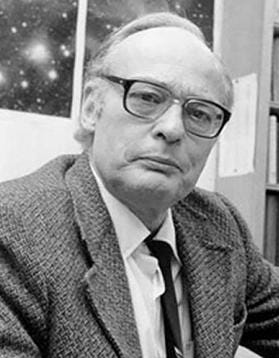We're more than the sum total of our choices, that all the paths we might have taken factor somehow into the math of our identity.
― Blake Crouch, Dark Matter
Greetings, Fellow Bohron
If there is no solid objection against the existence of parallel universes, is there a way to communicate with them? Can we visit the other universes? Let’s find out what options do we have.
Contact Between Universes
We first need to understand the idea of decoherence. Coherence is a fundamental concept in the study of vibrations and waves. Two waves are said to be coherent if they vibrate in unison with each other.

The idea is that all parallel universes are possibilities, but the wave function of our universe has decohered (the opposite of coherence) from them and hence cannot interact with them.
Michio Kaku explains the decoherence of these parallel universes as follows: the atoms in our universe suffered countless collisions with other atoms. Each collision collapses the wave function to some extent i.e. the number of parallel universes decreases. The overall effect of all the collisions is to collapse our wave function to one definite state.

Although the probability of interacting with another quantum universe similar to ours is very unlikely, contact with a quantum parallel universe cannot be ruled out. What about contact within a multiverse? Since universes in a multiverse can coexist simultaneously, so contact with the multiverse is still a possibility. Although it would be very difficult to accomplish, a Type III civilization might be able to journey to another universe.
A Baby Universe in the Laboratory
To understand how the big bang occurred, we need to study the conditions that caused the explosion. Recently, physicists have tried to create these conditions in labs. Can the action of such an explosion be mimicked in a lab? Can we concentrate enough energy to set off a mini-big bang?
Concentrating an enormous amount of energy at a single point leads to a collapse of space-time and creates a black hole.
In 1981, cosmologists Alan Guth, Andrei Linde and Alexei Starobinsky proposed the "inflationary universe" theory. The Inflation Theory proposes a period of extremely rapid expansion of the universe during the first few split seconds from 10−36 seconds to between 10−33 and 10−32 seconds after the Big Bang. For inflation to occur, Guth assumed that at the beginning of time, there existed tiny bubbles of space-time. One of these expanded exponentially to become our universe.

The data received from the WMAP satellite supports Guth’s proposition. Hence his theory is considered one of the leading candidates for the theory of the big bang.
Like any other theory, the inflationary model has its own complications. What set off inflation in the first place? Why did it stop? Can it happen again? To solve these problems, Guth and Edward Farhi asked: Can inflation be carried out by an advanced civilization?
And this is what they found: If we concentrate enough energy at a single point, tiny space-time bubbles would form spontaneously. Whether or not they would continue to expand would depend upon their size. If they are too small, they would disappear. If they are big enough, they could expand into an entire universe.

Causing artificial inflation is important since our present universe will die one day. So if we want to escape its eventual death, we must consider the possibility of creating a new universe.
The Evolution of Universes
Some physicists have asked an even more unusual question: Was our universe created by an advanced civilization?
In the Guth/Fahri speculation, an advanced civilization can create a baby universe, but the physical constants (such as the mass of the electron, and relative strengths of the four forces) remain the same. But what if they could play and slightly alter these constants in a baby universe? Then the baby universes would be able to "evolve" with time, with each generation of baby universes being slightly different from the previous generation. Only those baby universes will proliferate whose conditions sustain intelligent life. Physicist Edward Harrison referred to this idea as "natural selection" among universes.

"Intelligent life in parent universes creates offspring universes, and in the offspring universes fit for inhabitation, new life evolves to a high level of intelligence and creates further universes.”, says Harrison.
This "evolution of universes" idea might seem interesting, but it is untestable and unfalsifiable.
Currently, our technology is far too primitive to reveal the presence of these parallel universes. Maybe in thousands of years, such discoveries would lead to a paradigm shift in our approach towards understanding how the universe works.
Sources:
Ch 13 - Parallel Universes, Physics of the Impossible, Michio Kaku
Phenomena, Comment & Notes - John P. Wiley Jr., Smithsonian Magazine



